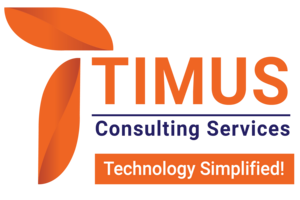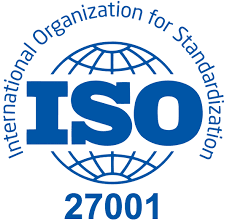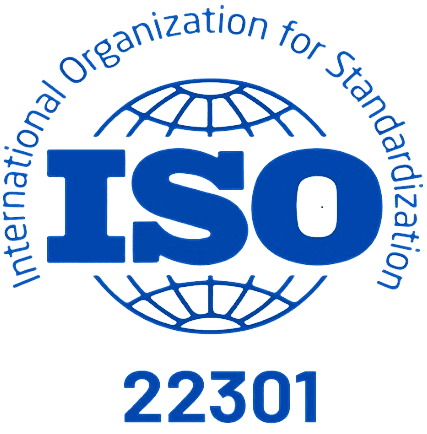Introduction
Technology has shifted how we live and work in today’s world by incorporating into almost every aspect of government, business, and personal life. But this technological advancement has also created new problems, especially in the areas of cybersecurity and IT risk. Managing IT risks and guarding against cyber-attacks are more important than ever as the global landscape grows more complicated and cyber threats are advancing.
Understanding IT Risk
IT risk refers to the possibility of loss or damage to an organization’s IT systems arising from a variety of sources such as system breaks, human mistakes, cyber breaches, or even natural calamities. These threats can adversely affect the operations and finances of a business as well as tarnish its image. The way threats can harm businesses and organizations is evolving due to innovation in technology, new threat vectors to systems, and the introduction of new regulations.
Common IT Risks in the Modern Business Environment
The nature of IT risk is constantly evolving as technology advances. Some of the most prominent IT risks businesses face today include:
-
Cybersecurity Threats
- Hacking : Malicious attackers might illegally access computer systems to extract useful information or sabotage the business.
- Phishing : Fraudulent emails or sites intending to deceive people to extract account passwords and personal details.
- Ransomware : A category of malicious software that inhibits access to systems or encodes data, demanding payment in return for system access.
- Malware and Viruses : Programs made with the intention of damaging or controlling systems, by corrupting data, stealing files or taking over the device.
-
Data Privacy Risks
Due to the increased sensitivity of the personal information being collected, it is vital to apply the necessary restrictions to the access and storage of consumer and employee data. GDPR and CCPA are designed to make business gigantic penalties when not complying with monitoring and preserving people’s private information.
-
Insider Threats
Employees or subcontractors who have access to private systems and information may, intently or unintentionally do harm. There can be threats like stealing classified data, exposing confidential information, or even putting harmful viruses into the systems.
-
Cloud Security Risks
As more companies transition to the cloud, they encounter new challenges related to data storage, access, and sharing. Issues like misconfigured cloud services, inadequate access controls, and poor encryption can leave sensitive data vulnerable to unauthorized access.
-
Third-Party Vendor Risks
Many organizations depend on external vendors for essential services, such as IT infrastructure, payment processing, and cloud storage. A cybersecurity breach at a third-party provider can create a domino effect, impacting on all the businesses that depend on their services.
-
Compliance and Regulatory Risks
Various industries are subjected to different standards and regulations regarding data security. Non-compliance with applicable laws can lead to significant fines, legal repercussions, and damage to reputation.
The Importance of Cybersecurity
Cybersecurity includes data integrity, information system protection, and defense against cyberattacks. With the increasing sophistication of cyber threats, cybersecurity has become an essential function for companies in every sector. In addition to preventing monetary losses, a robust cybersecurity plan promotes confidence among stakeholders, partners, and consumers.
Key Elements of Cybersecurity
Risk Assessment:
It’s essential to regularly evaluate the risks to your IT infrastructure, understand potential vulnerabilities, and identify areas for improvement to ensure effective cybersecurity.
Access Control:
By limiting access to sensitive data and systems based on roles and responsibilities, you can ensure that only authorized personnel have access to critical assets.
Encryption:
Protecting data through encryption, both at rest and in transit, safeguards it from unauthorized access or theft, even if cybercriminals manage to breach your network.
Incident Response Plan:
Creating and routinely testing an incident response plan enables organizations to respond swiftly and effectively to cyber incidents, minimizing damage and restoring normal operations.
Employee Training:
Employees serve as the first line of defense against cyber threats. Regular training on how to identify phishing attempts, maintain good password hygiene, and recognize suspicious activities can significantly reduce the risk of breaches.
Patch Management:
Keeping software and systems up to date with the latest security patches is crucial for mitigating vulnerabilities that any attackers could likely to exploit.
Backup and Disaster Recovery:
Regularly maintaining backups and having a disaster recovery plan in place ensures that critical data can be restored in the event of a cyber-attack or system failure.
Role of IT Risk Management
Cybersecurity focuses on safeguarding digital assets from direct threats, while IT risk management adopts a wider perspective by considering all potential risks to an organization’s IT infrastructure. An effective IT risk management framework encompasses:
Risk Identification:
Ongoing identification and evaluation of emerging threats and vulnerabilities.
Risk Assessment:
Analyzing the likelihood and potential consequences of identified risks to prioritize mitigation strategies.
Risk Mitigation:
Implementing measures and controls to reduce the impact of risks, such as utilizing security tools, establishing backup systems, and enforcing security policies.
Monitoring and Review:
Continuously observing systems for new vulnerabilities, reassessing risks, and updating policies to proactively address potential threats.
A robust IT risk management strategy ensures that organizations not only prevent attacks but also maintain resilience during incidents, thereby minimizing downtime and operational disruptions.
Conclusion: Building a Secure Future
The risk of cyberattacks is constantly changing along with the digital landscape. To safeguard their vital resources, organizations must adopt a proactive approach to cybersecurity and IT risk, incorporating strong risk management procedures, staff development, and modern security technologies.
Cybersecurity is not just the responsibility of the IT department. It is a shared responsibility that covers the entire organization. Recognize the importance of cyber security and take measures to manage IT risks and promote a culture of security awareness. How organizations can protect their data Ensure business continuity, Build trust with customers and stakeholders.
In a world where digital transformation is so prevalent, managing cybersecurity and IT risk is a continuous process that calls for attention to detail, planning, and commitment. Organizations may successfully negotiate the constantly shifting danger landscape and safeguard their future in the digital era by putting the proper procedures in place.
About us
We are Timus Consulting Services, a fast-growing, premium Governance, Risk, and compliance (GRC) consulting firm, with a specialization in the GRC implementation, customization, and support.
Our team has consolidated experience of more than 15 years working with financial majors across the globe. Our team is comprised of experienced GRC and technology professionals that have an average of 10 years of experience. Our services include:
- GRC implementation, enhancement, customization, Development / Delivery
- GRC Training
- GRC maintenance, and Support
- GRC staff augmentation
Our team
Our team (consultants in their previous roles) have worked on some of the major OpenPages projects for fortune 500 clients across the globe. Over the past year, we have experienced rapid growth and as of now we have a team of 15+ experienced and fully certified OpenPages consultants, OpenPages QA and OpenPages lead/architects at all experience levels.
Our key strengths:
Our expertise lies in covering the length and breadth of the IBM OpenPages GRC platform. We specialize in:
- Expert business consulting in GRC domain including use cases like Operational Risk Management, Internal Audit Management, Third party risk management, IT Governance amongst others
- OpenPages GRC platform customization and third-party integration
- Building custom business solutions on OpenPages GRC platform
Connect with us:
Feel free to reach out to us for any of your GRC requirements.
Email: [email protected]
Phone: +91 9665833224
WhatsApp: +44 7424222412
Website: www.Timusconsulting.com





